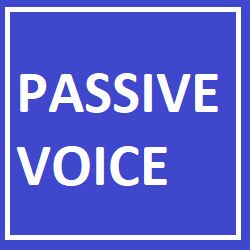What is Passive Voice?
In English, sentences can be written in two main forms: active and passive voice. In the active voice, the subject performs the action, whereas in the passive voice, the subject receives the action. The passivevoice is used when the focus is on the action or the object of the action rather than who is performing it.
Example:
● Active voice: The chef cooked the meal.
● Passive voice: The meal was cooked by the chef.
In the passive sentence, “the meal” becomes the subject, shifting the focus away from “the chef” who performed the action.
When to Use Passive Voice
The passive voice is particularly useful in the following situations:
1- When the actor is unknown:
● Example: The painting was stolen. (We don’t know who stole the painting.)
2- When the actor is irrelevant:
● Example: The road is being repaired. (Who is repairing it is not important, only the fact that it is being repaired matters.)
3- When we want to emphasize the action or result:
● Example: The report was finalized yesterday. (The focus is on the completion of the report, not who finalized it.)
How to Form Passive Voice
To form the passive voice, follow this structure:
1- Use the appropriate form of the verb “to be” (is, am, are, was, were, etc.).
2- Add the past participle of the main verb.
Example Conjugations:
● Present simple:
● Active: They clean the house every day.
● Passive: The house is cleaned every day.
● Past simple:
● Active: The company launched the product last week.
● Passive: The product was launched last week.
● Future simple:
● Active: The team will complete the project by Friday.
● Passive: The project will be completed by Friday.
Passive Voice with Different Tenses
1- Present Continuous:
● Active: The mechanic is fixing the car.
● Passive: The car is being fixed by the mechanic.
2- Past Continuous:
● Active: The builders were constructing a new building.
● Passive: A new building was being constructed by the builders.
3- Present Perfect:
● Active: They have written the letter.
● Passive: The letter has been written.
4- Past Perfect:
● Active: The manager had completed the report before the deadline.
● Passive: The report had been completed before the deadline.
5- Modal Verbs:
● Active: The team can finish the task.
● Passive: The task can be finished by the team.
The Role of “By” in Passive Voice
In passive sentences, the doer of the action can still be mentioned using “by,” but this is optional and only included when necessary.
Example:
● The song was sung by the singer.
● The letter was written by John.
However, in many cases, the agent is omitted if it’s either unknown or unimportant.
Common Mistakes with Passive Voice
Here are some common pitfalls to avoid when using the passive voice:
1- Incorrect use of tense: Ensure that the verb “to be” is correctly conjugated for the tense being used.
● Incorrect: The letter wrote by her. (This is missing the auxiliary “was.”)
● Correct: The letter was written by her.
2- Overusing the passive voice: Using passive constructions too frequently can make sentences sound indirect or awkward. Active voice is generally clearer and more direct, so balance is key.
3- Leaving out important information: Sometimes, using the passive voice can obscure who performed the action if the subject is necessary for clarity.
● Example: The decision was made. (Who made the decision?)
Passive Voice vs. Active Voice: When to Choose?
Understanding when to use passive voice versus active voice depends on the context. Generally, active voice is preferred for clarity and directness, while passive voice is useful for emphasizing the action or when the actor is not important.
Active vs. Passive Example:
● Active: The researcher discovered a new species.
● Passive: A new species was discovered by the researcher.
In scientific writing, passive voice is often used to focus on the results rather than the person performing the action.
Why Passive Voice Matters in English Mastery
Mastering the passive voice is essential for advanced English learners, as it is frequently used in both formal and informal contexts. Passive constructions are common in academic writing, news reports, and instructions, making them a valuable tool for effective communication.
Practice Examples
Here are some practice sentences to transform from active to passive voice:
1- Active: The company will release a new product next year.
● Passive: A new product will be released next year.
2- Active: Someone has broken the window.
● Passive: The window has been broken.
3- Active: They are renovating the old building.
● Passive: The old building is being renovated.
Try These Yourself:
1 -They are delivering the package.
2- She wrote the book last year.
3- The committee will make a decision tomorrow.
Conclusion
The passive voice is an important aspect of English grammar that allows speakers and writers to shift focus from the performer of an action to the action itself. While often criticized for making sentences less direct, passive voice plays a key role in both academic and professional writing. By understanding when and how to use passive voice correctly, English learners can add variety and complexity to their language skills. |


